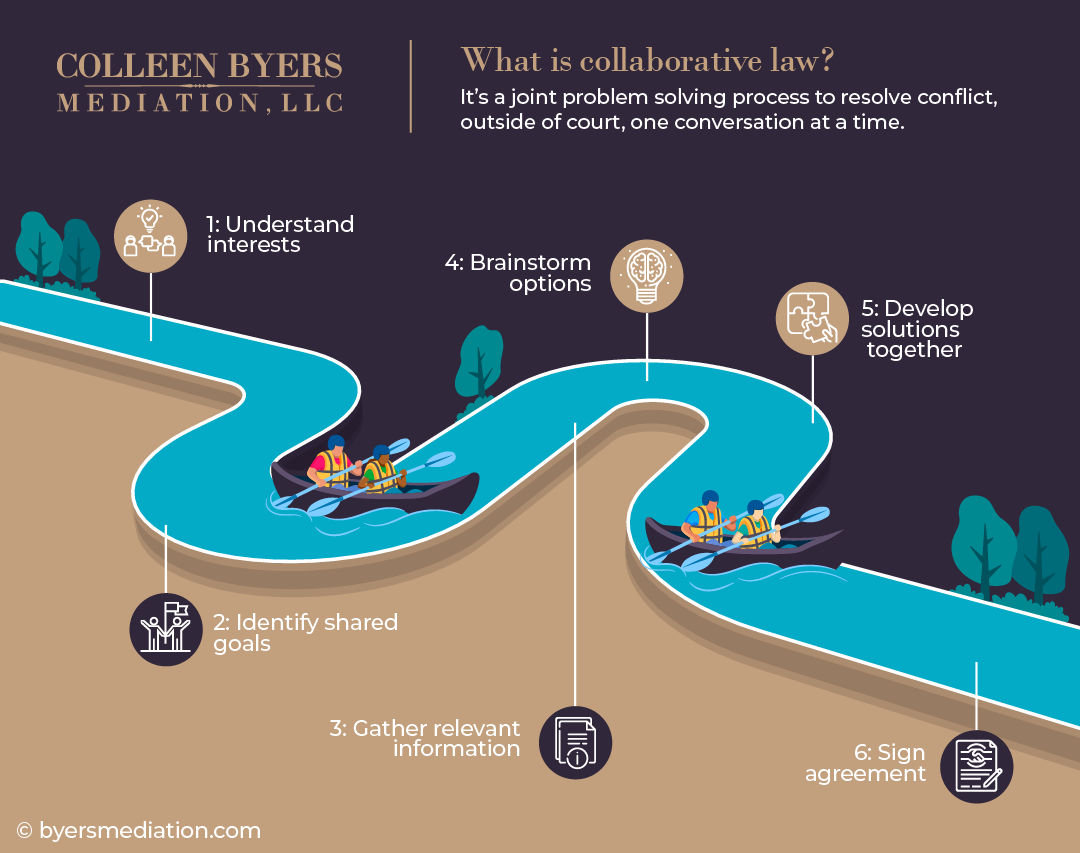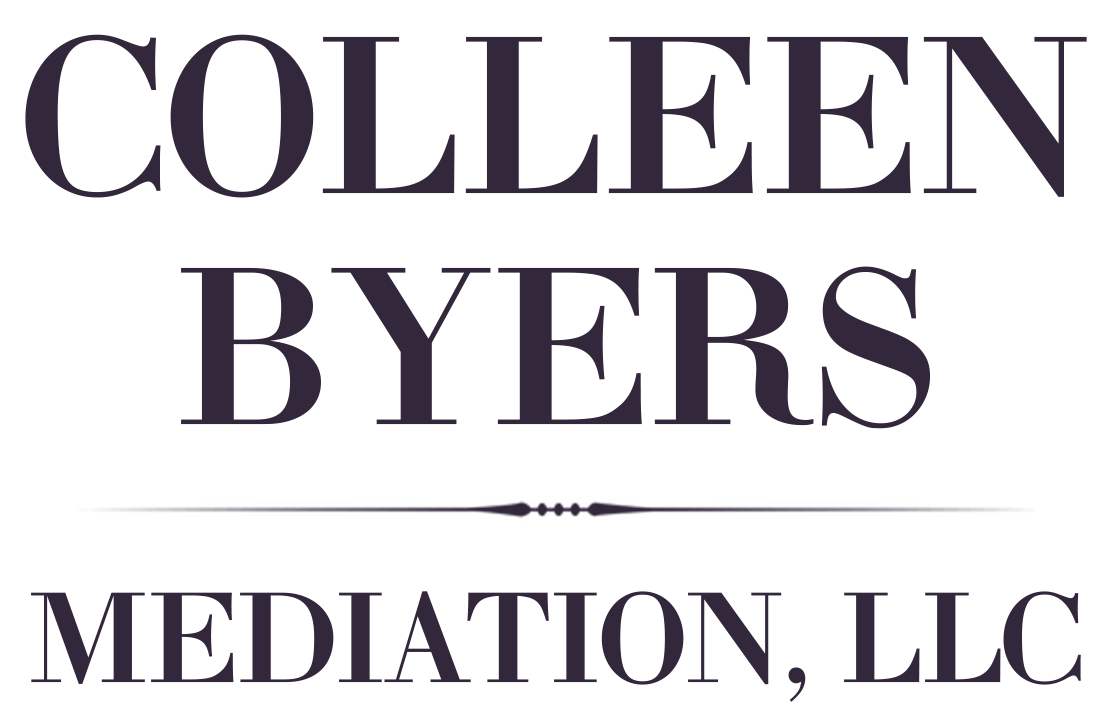Collaborative Neutral
What is the Collaborative Process?
The Collaborative Process is a joint problem-solving process to resolve family and business disputes, outside of court, one conversation at a time. With this type of approach to conflict resolution, the parties work together, along with their collaborative lawyers, and often aided by a neutral facilitator, to jointly resolve their legal dispute.
The pathway to resolution in the Collaborative Process progresses through these steps:
- Understand the parties’ respective interests;
- Identify shared goals;
- Gather and freely exchange relevant information;
- Brainstorm options;
- Develop solutions together; and
- Sign a final agreement.

Each step in the Collaborative Process happens outside of the courtroom and outside of the litigation process to ensure that the parties and any professionals assisting them are all committed to finding a resolution without the time, expense, and inefficiencies of going to court.
Who should consider the Collaborative Process for resolving legal disputes?
- Family-owned businesses who want to develop an exit strategy for one or more partners and still enjoy a meal together during the holidays;
- Siblings who are navigating care for an elderly parent;
- Family members who are struggling over inheritance after a relative has died;
- Separating couples who want to build a strong co-parenting relationship for the benefit of their child(ren); and
- General contractors and sub-contractors who regularly work together on large construction projects and sometimes run into a snag.
How I help in the Collaborative Process
Although I am a collaboratively trained attorney in the Collaborative Process, I serve exclusively as a neutral facilitator for all of the parties. The collaborative attorneys who represent each party in the Collaborative Law Process give the legal advice to their respective clients, while I work as a neutral member of the professional team to help the parties find a resolution, outside of the courtroom, that will work for all the parties, without destroying their relationship. When I work as a Collaborative neutral, I work with the party(ies) to:
- Articulate their goals and objectives;
- Identify their shared interests;
- Productively navigate challenging emotions as they arise; and
- Brainstorm possible solutions.




